For the love of lavender
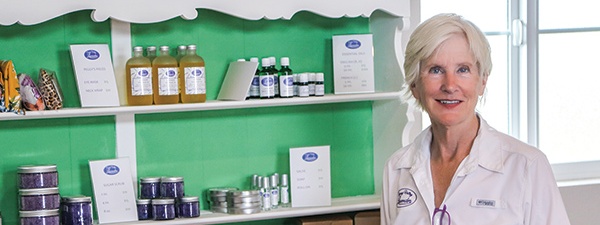
May/June 2023 California Bountiful magazine
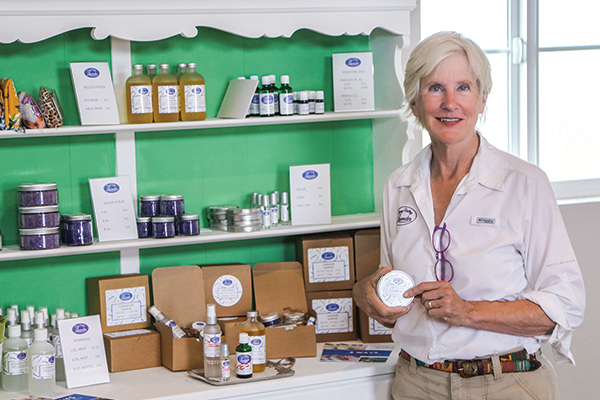
Farmer provides fragrant products, ‘happy place’ for visitors
Story by Linda DuBois
Photos by Mitchell Yerxa
Jerrie Acridge is a passionate fan of lavender. She delights in the color, scent and taste. So, when the Antioch resident was on her way to a casino in western Yolo County and spotted a “Capay Valley Lavender” sign along the rural road, she was intrigued.
When she returned home, she looked up the website and learned the organic lavender farm is run by Sherri Wood, who offers farm tours and workshops and makes and sells a wide variety of lavender products at a farm store and online.
Before leaving the website, Acridge signed up for an event, and at that first visit “fell in love” with the farm and Wood’s products.
In the two years since, she’s attended workshops and plein air paintings and enjoys shopping regularly in the store. There, she’s collected scented items like candles, sachets and sprays, lavender-flavored snacks and beverages, and bath and body products, some that she uses daily.
“I think I have almost everything she sells,” Acridge says. “The hand cream was my favorite in the beginning—until I started going to workshops where we make our own products. Now, I don’t know if I could choose a favorite. Although, I do love, love, love the sugar scrub—oh, and the body butter.”
Frequently driving the one hour and 20 minutes to restock doesn’t faze her.
“If I had to drive two or three hours, I’d probably still go. I know I could order online and Sherri would mail stuff to me, but I just like being at the farm,” Acridge says.
One of her favorite memories is of the day she and her daughter sat at a picnic table under a tree, chatting and enjoying lavender ice cream. “The birds were singing and butterflies were fluttering around,” Acridge says. “It was just so beautiful and peaceful. It’s truly my happy place.”
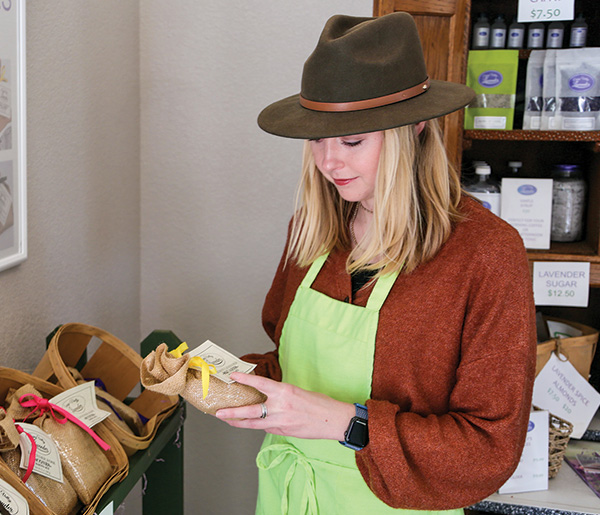
Late-blooming farmer
Visitors like Acridge bring gratifying “hostess” and “educator” roles to farming Wood hadn’t anticipated when the longtime city dweller with a background in banking and nonprofits decided to start a farm in her mid-60s.
Wood had lived 20 different places by age 40 when she married and settled in San Francisco. After her husband passed away in 2014, she began to contemplate her future. Upon reflection, she realized that, while she had loved the life they’d shared, she also had pushed aside some of her own aspirations, especially her longtime dream of farming. So, she began searching for a part-time country home with land within a two-hour drive.
In 2016, she found everything she was looking for in the Capay Valley and bought 28 acres.
She began to research possible crops and decided lavender was perfect.
“There’s good pH here, it’s a low-water plant and there’s a Mediterranean climate,” she says.
So, she threw herself into learning how to grow it and in May 2017, at age 64, she planted her first shrubs.
After living part time on the farm for a few years, she found herself wanting to spend more and more time there. “So, I sold my place in the city and moved here full time.”
There was just one inconvenience: By then, she was dating a man in San Francisco. But soon after, COVID hit and he left the city to shelter in place at the farm. “He got here and said, ‘Now I understand why you won’t go back.’ … Well, we found out we shelter pretty well. So, now I have a husband.”
Over the years, she’s expanded to 6 acres of lavender and 10 acres of olives, along with a few pomegranate and fig trees. With assistance from the USDA’s Natural Resources Conservation Service, some of her land is committed to wildlife and pollinator habitat.
Drawing on her management background, in March 2022, she began a two-year term as the United States Lavender Growers Association president.
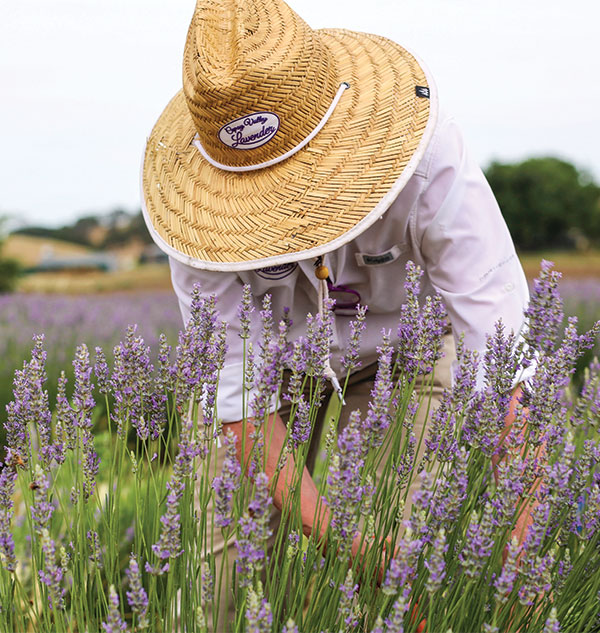
Versatile plant
Wood grows several lavender varieties, including aromatic French lavender for fragrance, sweet English lavender for culinary use and Spanish lavender, with its vibrant and frequent blooms, for landscaping.
While most lavender blooms are varying shades of purple, there also are white, yellow, red and pink varieties. Wood has a demonstration garden showing seven different varieties, but, so far, she sells only the purple ones.
She plants the shrubs in fall and early spring and the perennials will last for several years.
Challenges have included weed management and acquiring suitable harvest equipment—she’s purchased some from New Zealand, where lavender farms are more common.
She employs two people who handle farm maintenance like weeding, irrigating and fertilizing, and two who help with product sales in the farm store. She hires a larger crew for harvesting, which begins in late May to early June.
To harvest for buds, used for sachets and other scented craft items, and bundles, used as cut flowers for decoration, they use a hedge trimmer. They have about three days to finish harvesting the bundles before the buds fall off. They then hang them upside down for three to four days to dry.
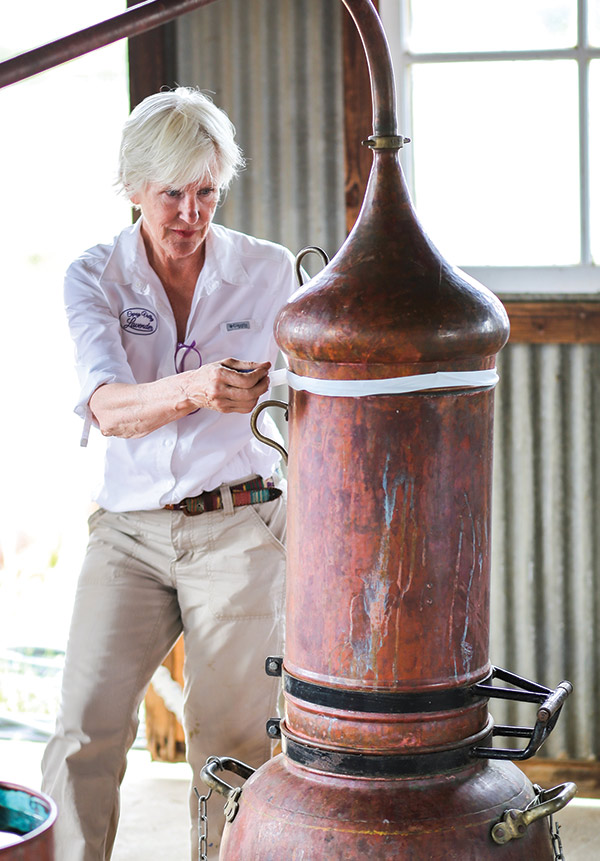
They have until August to harvest for oil since buds can be open. “We have this little buggy that we push down the row and it’s got a saw that cuts the plant and throws it in the air into a big bag,” Wood says. “We’ll go out in the morning and harvest about 120 pounds and then we’ll distill it in 10-pound increments. So, we’ll do about 10 or 12 runs of distillation throughout the day and then start again the next day.”
To distill, she uses copper stills from Portugal with a 3,000-year-old design. “We boil water in the bottom of a pot and as the steam rises through the plant material, it gets the essential oil,” she explains. The steam cools back into a liquid and runs into a glass jar, where the oil sits on top. They then funnel the oil into a separate jar.
She uses the buds and oil to make all the products she sells, adding that she doesn’t mind not having any help for this step. “It’s fun. It’s a recipe. I love baking and I find the process of making products very similar.”
Now 70, she reflects on her thriving farm and business and her bucolic life in a quiet, beautiful setting. “It’s been even more fulfilling than I expected,” she says. “I truly am living my dream.”
Farmer offers tips
on growing lavender
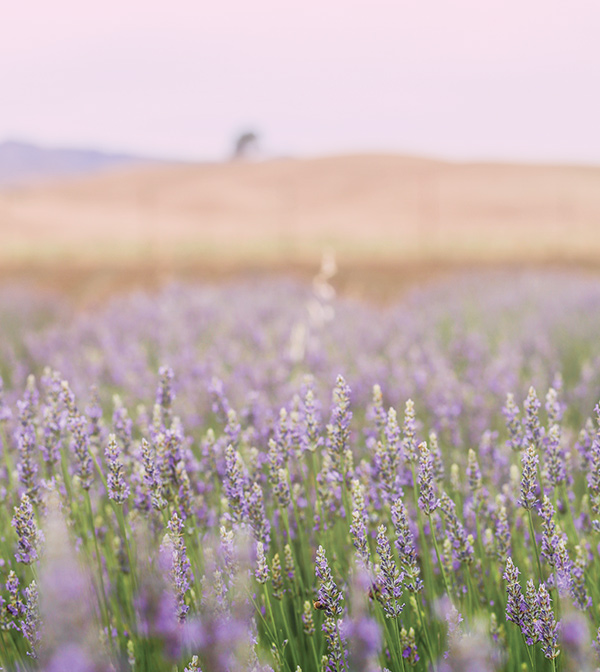
A lavender bush in a home garden can be used as a fragrant herb, for cut flowers or simply as a beautiful landscape addition.
The drought-tolerant perennial does well in most California climates and, with the proper care, will stay healthy and full of blooms from five to 15 years, depending on the variety, weather and soil.
Sherri Wood, who owns Capay Valley Lavender farm in Yolo County, explains how she keeps her plants flourishing.
“You have to prune them every fall,” she says. This will encourage abundant blooms and extend the plant’s lifespan.
While lavender doesn’t require as much water as many plants, it’s still necessary to keep the roots of newly planted shrubs moist, she says. “New plants have to be hand watered about every third day,” Wood says. In her hot, Mediterranean climate, she irrigates mature plants about twice a week.
If you want to get a lavender plant to harvest for use in bouquets or scented products, you’ll need to plan ahead.
“That first year you put the plants in, you have to just nip their buds and then the next year, you’ll get your first small harvest,” Wood explains.
She adds that if properly cared for, plants will produce an increasing volume of lavender each year until they reach maturity after three or four years.
“You’ve got to have patience,” she says.

